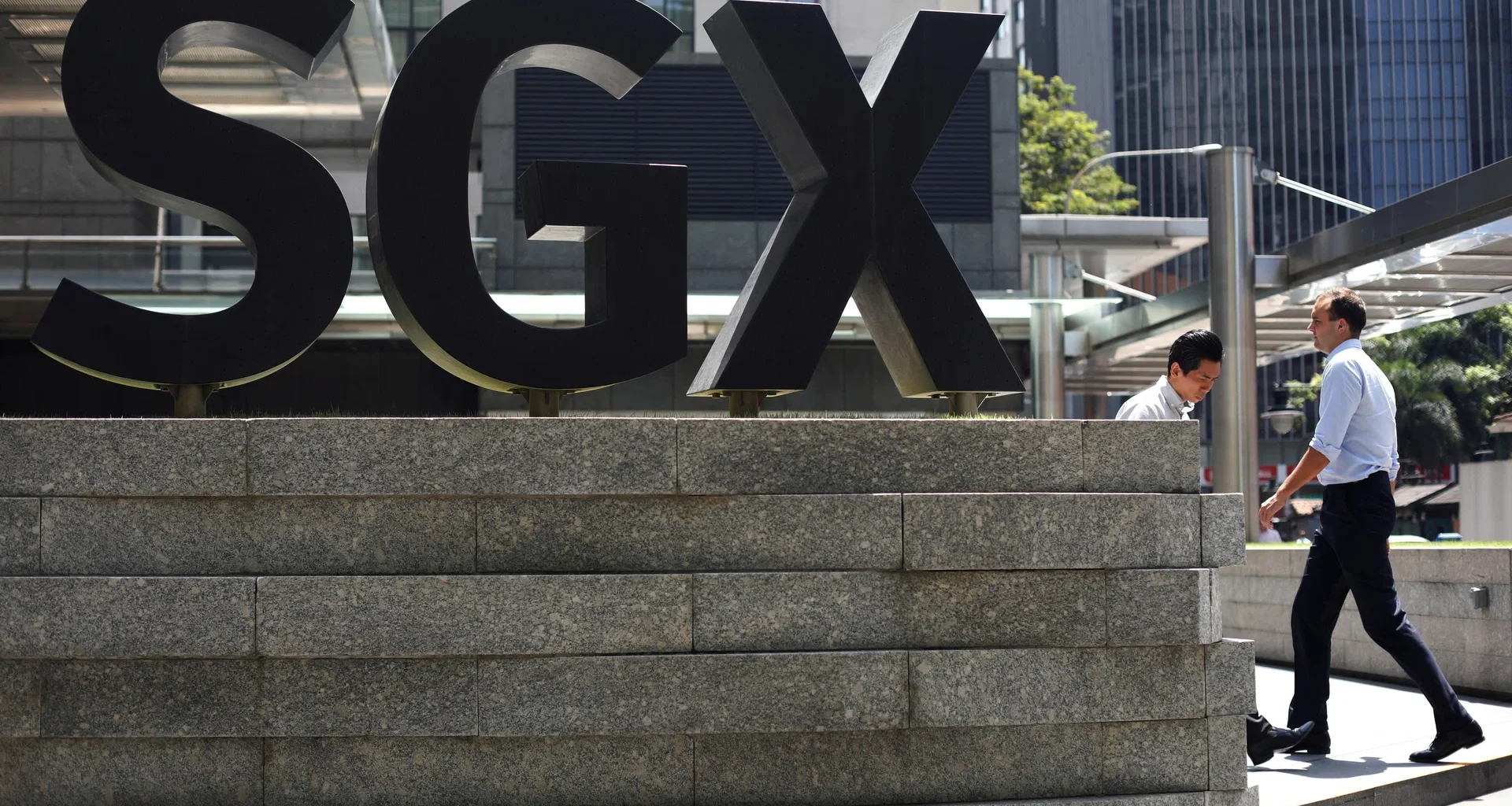[SINGAPORE] In the first five weeks of the third quarter of 2025 till Aug 7, institutions net bought S$130 million worth of Singapore-listed stocks.
More than 90 stocks with market capitalisations above S$1 billion accounted for S$95.4 million of this inflow, though that represented just 0.01 per cent of their combined S$845 billion market value.
Meanwhile, stocks with market capitalisations below S$100 million had a combined net institutional outflow of
S$7.7 million.
Sitting between these two tranches of market capitalisation were 161 stocks, that span all sectors, with market capitalisations from S$100 million to S$1 billion and a combined value of S$54 billion.
The segment of 161 stocks booked S$42.3 million in net institutional inflow, representing 0.08 per cent of its combined market capitalisation – eight times the net inflow rate of the large-cap group when adjusted for size.
Just over a quarter of these 161 stocks belong to the industrials sector which booked the most net institutional inflow over the period, with the technology sector a close second.
BT in your inbox
Start and end each day with the latest news stories and analyses delivered straight to your inbox.
Frencken Group, CSE Global and Wee Hur Holdings booked the highest net institutional inflows among Singapore-listed stocks during the period. Proportional to the market capitalisation, CSE Global, and Frencken Group also led the highest net institutional inflows along with Envictus International.
The table details the stocks with market capitalisations from S$100 million to S$1 billion that booked the highest net institutional inflow proportional to market capitalisation in the first five weeks of Q3 2025 till Aug 7.
Envictus International
Envictus International booked S$4.3 million of net institutional inflow, which represented 4.1 per cent of its S$105 million market capitalisation as at Aug 7.
The stock has a 29 per cent return on equity and price-to-earnings (P/E) ratio of 7x. The established food and beverage group listed on Catalist in 2004, and upgraded to the mainboard in 2009.
As reported on May 9, Envictus International recorded a net profit of RM16.1 million (S$4.87 million) for its H1 FY2025 (ended Mar 31), driven by 17.7 per cent revenue growth to RM369.8 million.
This was led by strong gains in its food services division, particularly from Texas Chicken. Gross profit margin improved to 44.7 per cent, supported by broad-based sales growth, operational efficiency and market expansion across all divisions.
On Jul 29, Venice Concepts entered into a sale and purchase agreement with JAG Capital Holdings to acquire 85,170,779 ordinary shares in Envictus International Holdings.
This represented 28 per cent of the outstanding shares of the company. Venice Concepts is a wholly owned subsidiary of Paramount Corporation, listed on Bursa Malaysia.
The acquisition supports Paramount Corporation’s strategy to expand its footprint in the F&B sector.
CSE Global
CSE Global booked S$16.5 million of net institutional inflow, which represented 3.3 per cent of its S$497 million market capitalisation as at Aug 7.
At the same time, the stock rallied 23 per cent, while analysts at UOB Kay Hian Research and Maybank Investment Banking Group increased their target price on the stock.
The 23 per cent gain extended the rally from the end of May to 64 per cent as at Aug 7.
The gains since end-May have lifted the P/E ratio of the leading systems integrator and global provider of electrification, communications and automation solutions from 11x to 17x.
On Aug 6, CSE Global announced it had secured S$211.3 million in new orders for Q2 FY2025 (ended Jun 30), reflecting a 3.8 per cent increase from Q2 FY 2024 (or 7.8 per cent on a constant currency basis).
The group highlighted that the electrification segment remained the largest contributor, mainly due to higher demand from the data centre market.
This saw the group close H1 FY 2025 with an order book of S$573.8 million.
On May 14, CSE Global reported its Q1 FY2025 revenue increased 4 per cent from Q1 FY2024 to S$205.5 million, primarily driven by the communications and automation segments in the Americas region.
This follows its FY 2024 revenue reaching a new high of S$861.2 million, which was up 18.8 per cent from FY 2023, and mainly driven by the electrification and automation segments.
CSE Global noted that electrification, communications and automation will remain its core business focus areas, while it continually expands its engineering capabilities and technology solutions to adapt to evolving market demands.
The group also believes that the urbanisation, electrification, decarbonisation and artificial intelligence megatrends present significant growth opportunities.
Frencken Group
In the first five weeks of Q3 2025, Frencken Group booked S$20.3 million of net institutional inflow, which represented 2.8 per cent of its S$713 million market capitalisation as at Aug 7.
Over the period, the share price of Frencken Group rallied 35 per cent, while analysts from DBS Group Research and CGS International and Maybank Investment Banking Group increased their target price on the stock. Phillip Capital also initiated coverage in July.
The global technology solutions provider to leading multinationals across aerospace, life sciences, automotive, healthcare, industrial and semiconductor sectors will release its H1 FY2025 results (ended Jun 30) on Aug 14.
On Jun 3, Frencken Group’s subsidiary ETLA entered into a land lease agreement with JTC Corporation to develop a new manufacturing facility in Singapore, aimed at expanding and consolidating its mechatronics operations while enhancing capacity, efficiency and long-term growth potential.
The group said that the new facility will boost productivity and expand capacity, particularly for larger cleanrooms, to support programme transfers from Europe and scale up its business with key wafer fabrication equipment customers.
On May 20, Frencken Group reported that its Q1 FY2025 (ended Mar 31) revenue rose 11.5 per cent from Q1 FY2024 to S$215.8 million, driven by stronger contributions from its mechatronics division, while net profit grew 12 per cent to S$10 million on improved operating leverage and a higher gross margin of 14.8 per cent.
The writer is the market strategist at Singapore Exchange (SGX). To read SGX’s market research reports, visit sgx.com/research
